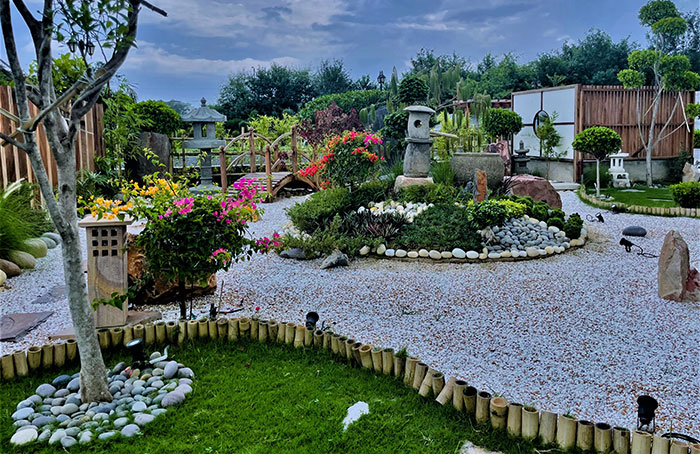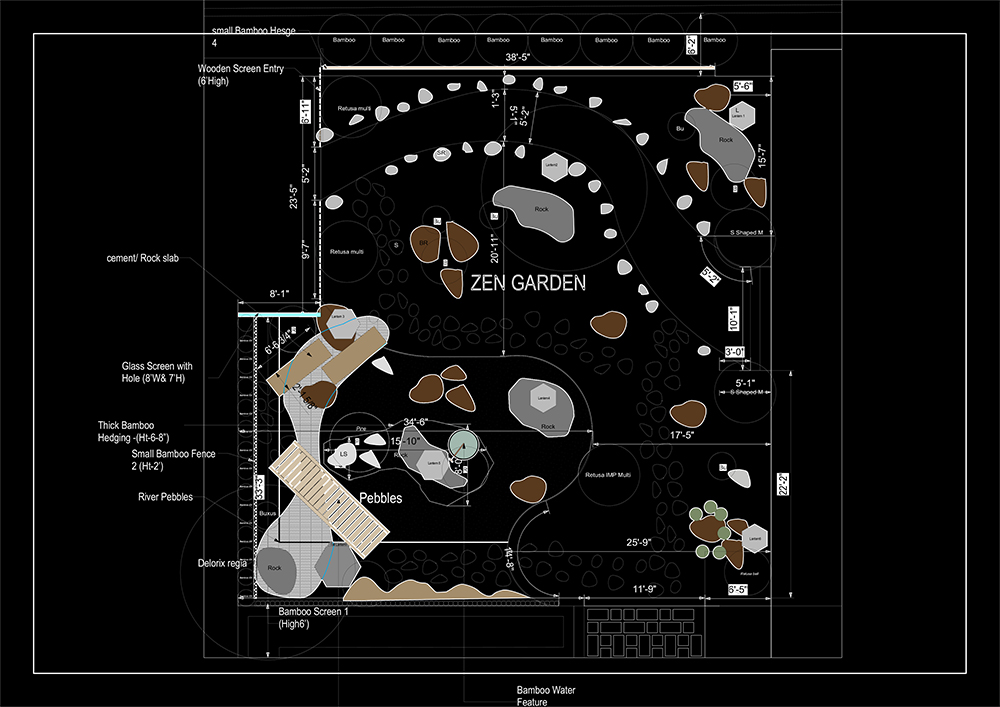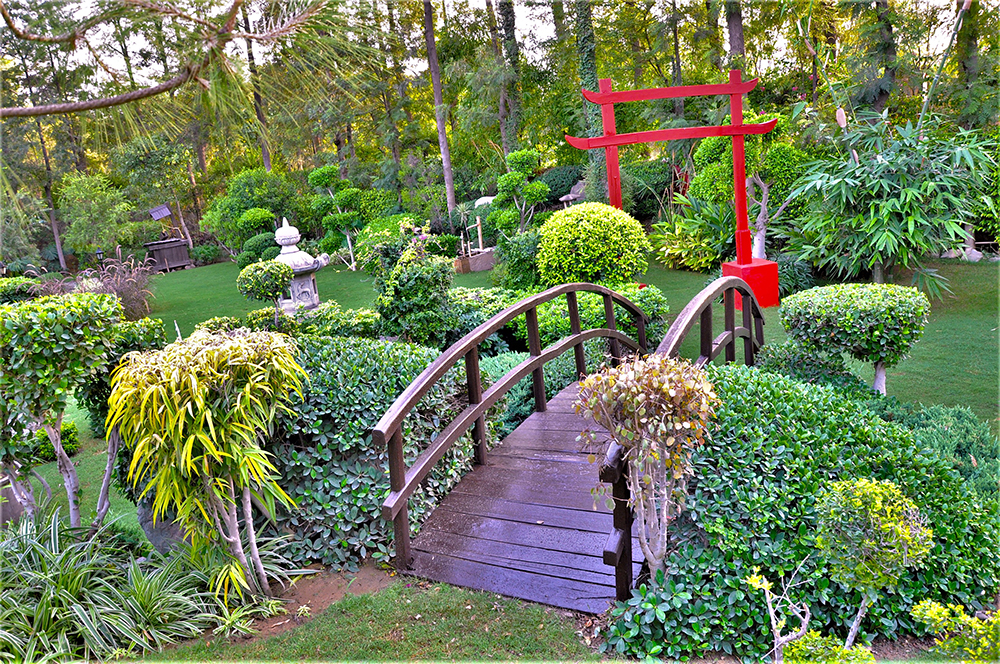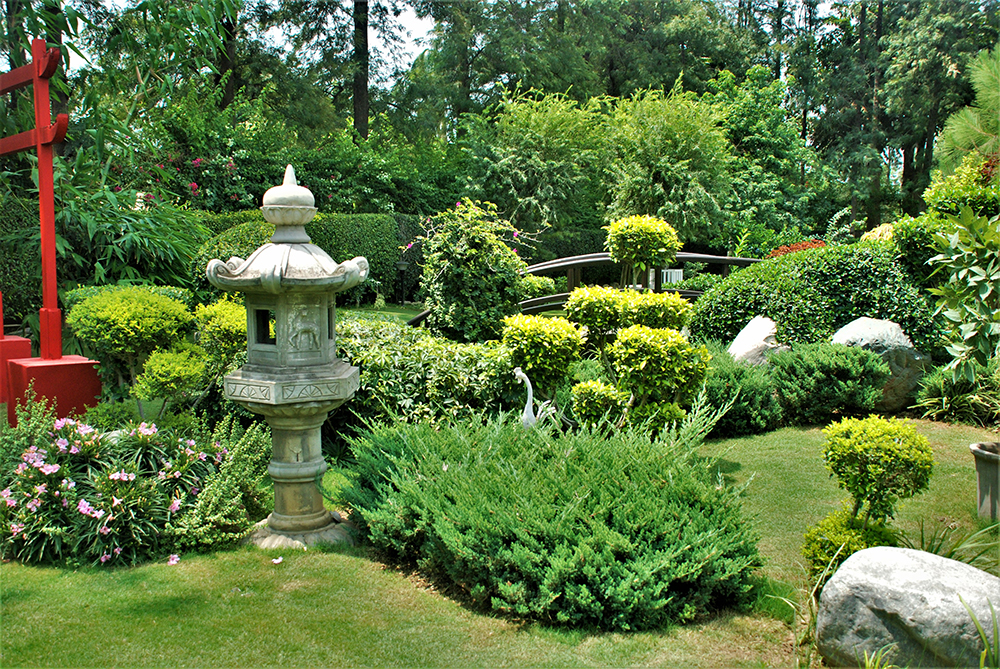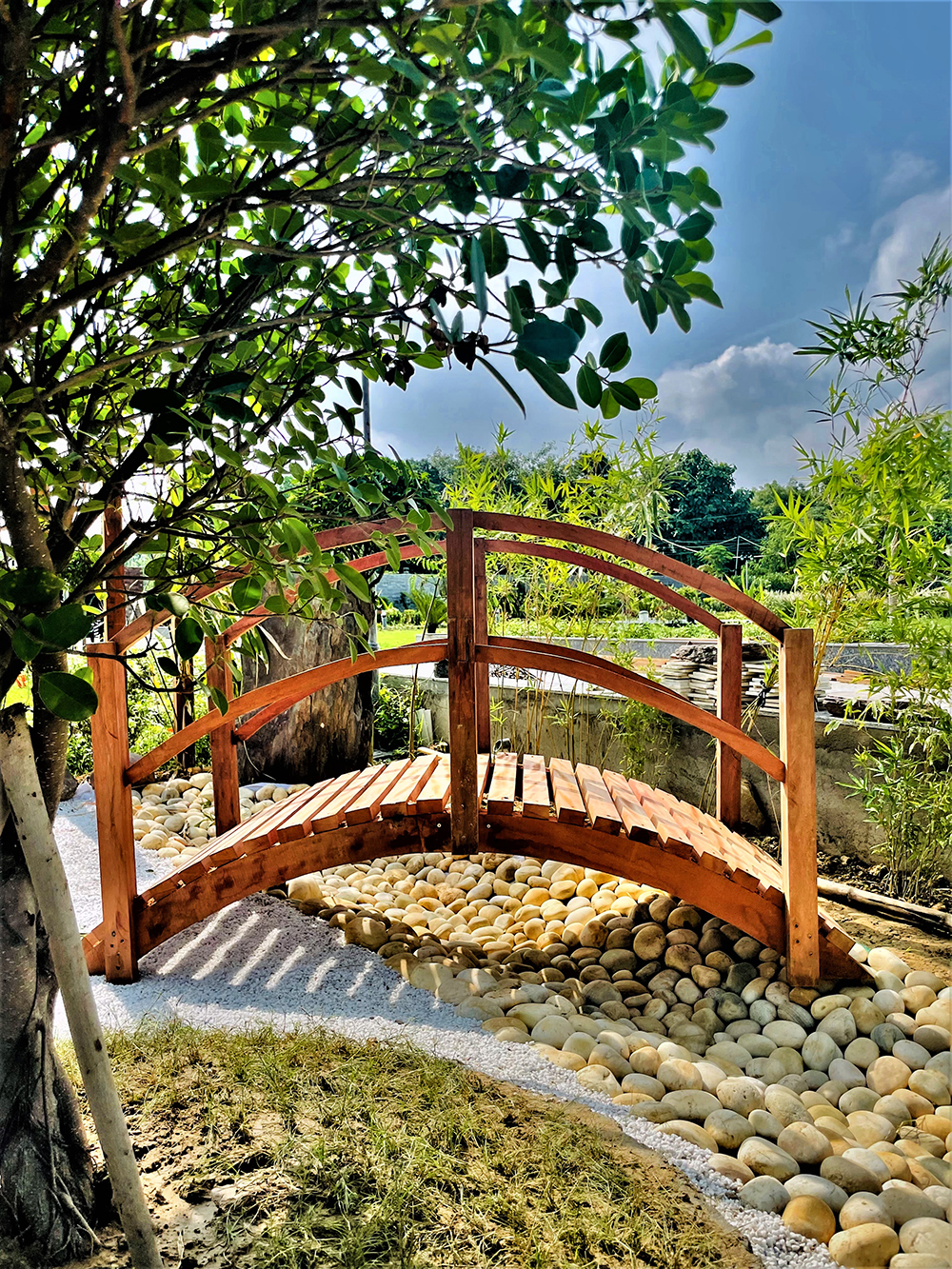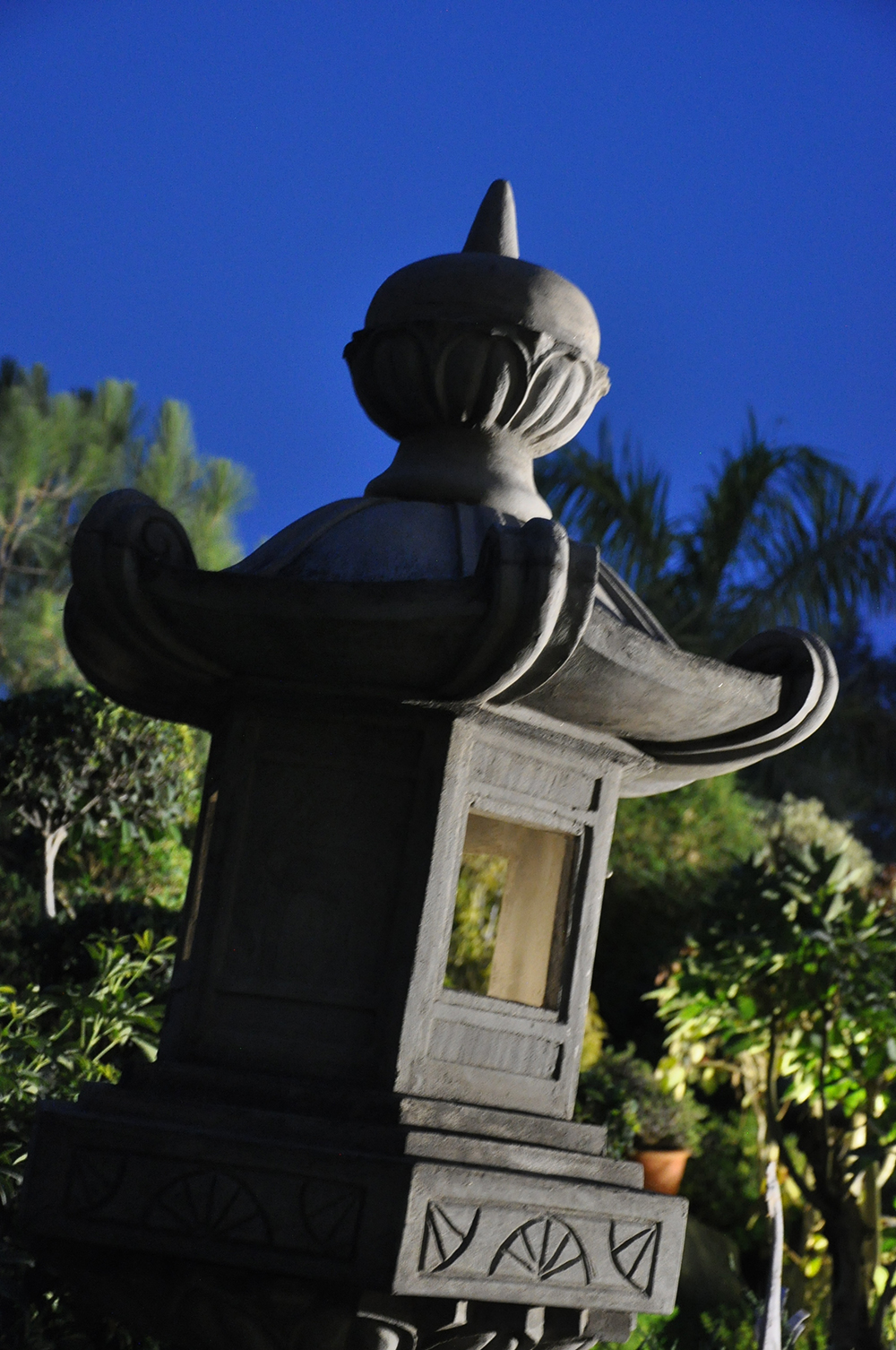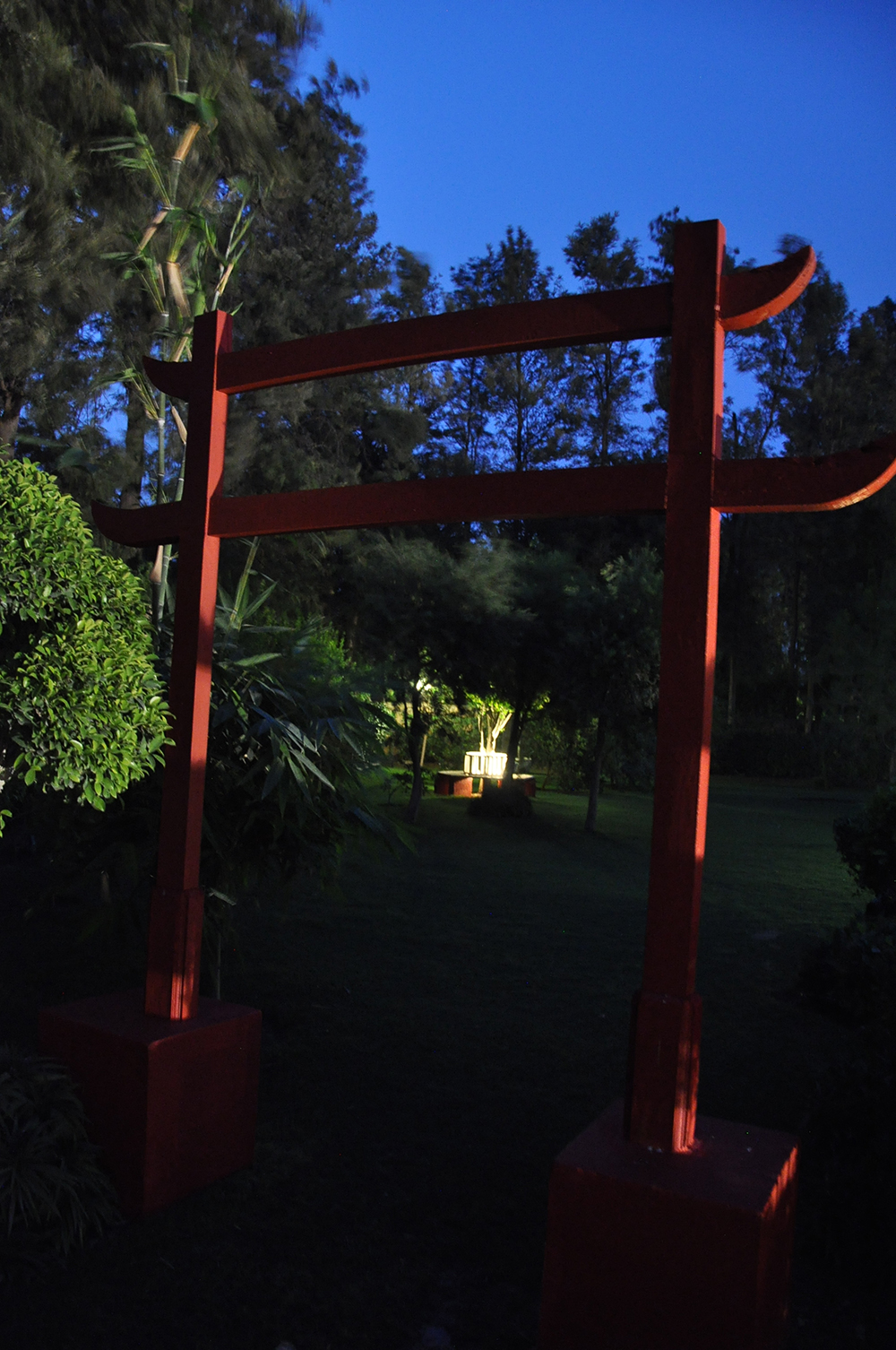Zen Garden
Japanese gardens are renowned for their transcendent beauty. The classical Zen garden, for example, is praised for its purity and meditative spirituality. Its transformative quality is by no means an accident; Japanese gardens are meticulously designed and carefully crafted down to every single element. Their distinct styles are in fact exceedingly varied and reveal a deep connection to Japan’s history and culture. Whispering Gardens can four types of Zen gardens for private residences or commercial places like Japaneses restuarents to create a perfect ambience of Japan. The beauty of Japanese garden needs no space restriction and can be created from a large space to a very narrow lane available between the house and boundary wall .We have succesfully installed zen gardens from large central courtyard to small Balconies and rooftops. WG can help you with the following five types of zen gardens :
1. Dry Landscape Garden
The dry landscape garden (Karesansui) is the best known type of Japanese garden type and is often called Zen garden. While monks do use them when practicing Zen .Dry landscape gardens lack one elements that ties together all other styles of Japanese garden: the water. Water is instead replaced by gravel, giving the impression of a dry ocean or river. Its very important to use the empty space between the stone groups which is called yohaku no bi – the beauty of empty space. Sanzon-ishigumi, the stone triad, is perhaps the most popular stone setting in Japanese garden design, representing a deity-stone in the middle with two supporters on either. This arrangement is generally used in a religious context.
2. Study Garden
The study garden (Shoinzukuri Teien) isn’t designed for visitors to wander around, but rather to enjoy it from the study, like a painting. The most common layout for a Study garden begins with a pond nearest to the visitor, with the garden leading the view up an incline beyond. Bridges are often placed on one side of the pond while both stone settings and small shrubs are arranged in various locations on the garden slope. The stonework include lanterns, pagodas and statuary. Kasuga-style lanterns (Toro) are the most common type and can be found in almost every traditional Japanese garden. The stone hexagonal cut with two openings and carvings of deer form these lanterns standing on a single solid pillar.
3. Strolling Garden
Stone bridges come in various shapes: slightly curved, as one whole block or as two blocks parallel to each other with only a small overlap in the middle. Stone bridges are made of hewn rock and are used to span shorter distances.
4. Tea Garden
Japanese tea gardens (Chaniwa or Roji) are always connected to a tearoom or tea house and are an integral part of the tea ceremony. A typical tea garden has one or more gates, stepping stones, a water basin (tsukubai) placed in front of stone lantern and mostly evergreen, nonflowering plants.
5. Courtyard Garden or Tsuboniwa
Gardens within the walls of a residence or in a small, enclosed space beside them, are known as Courtyard Gardens or Tsuboniwa



